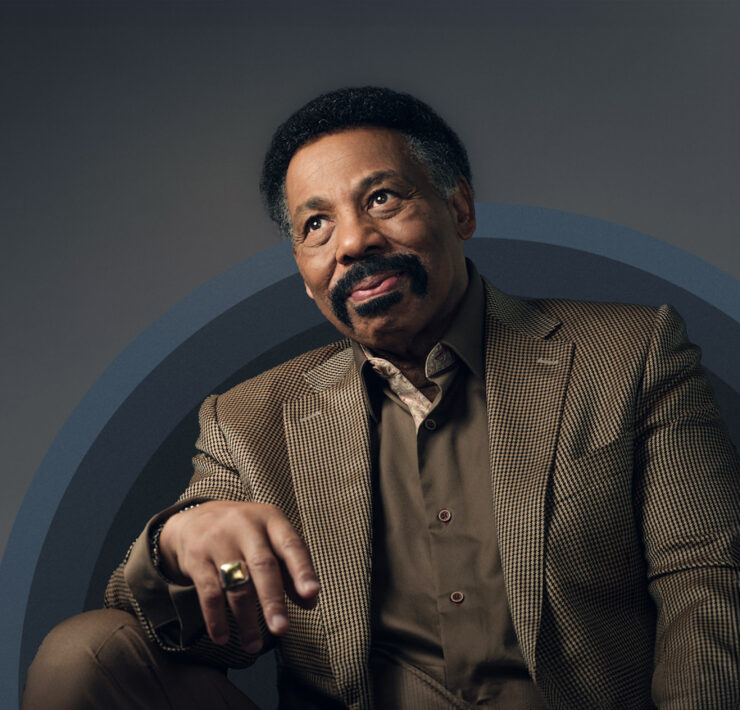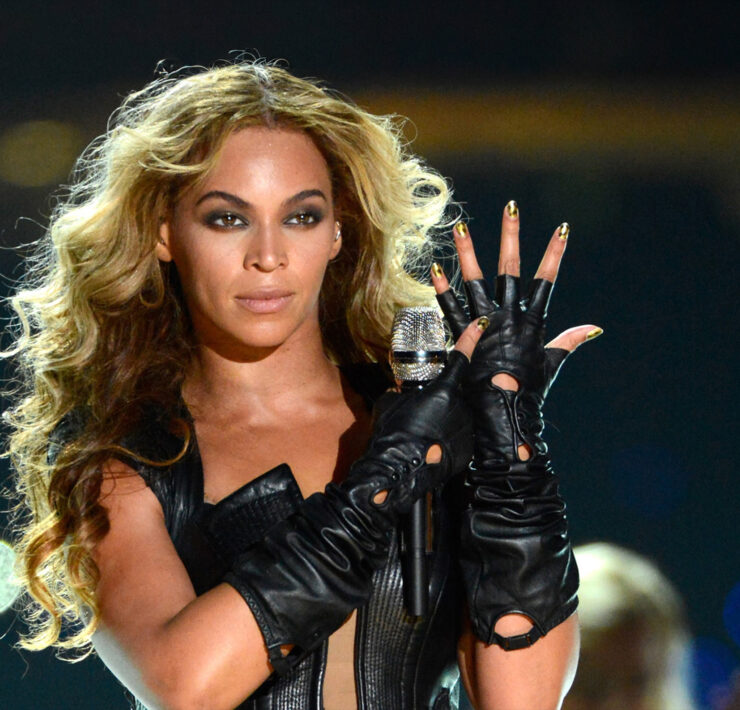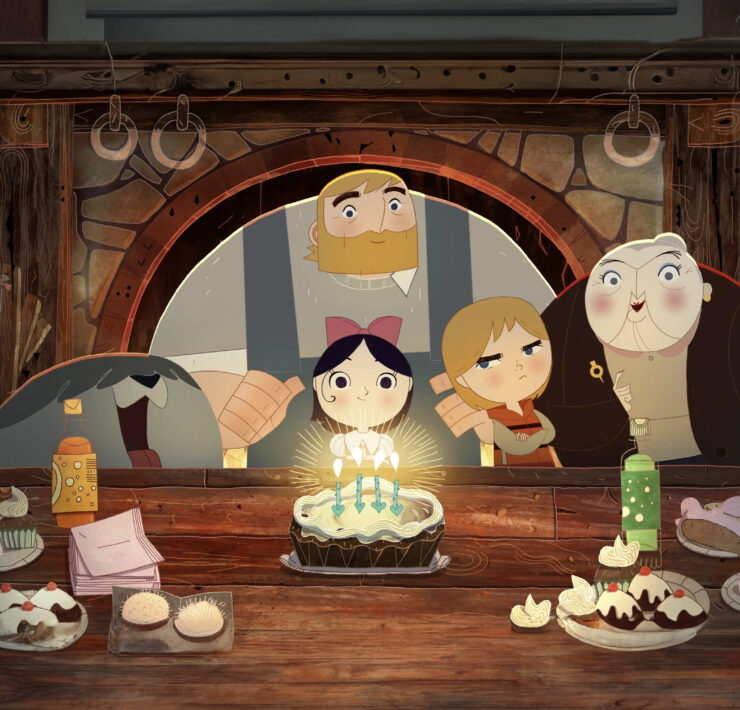The word on the street is leave early and dress warmly, so Natalie and I are at the American University bus stop at 5:15, stomping our feet and blowing into cupped fists along with a cluster of students. After 30 minutes and no bus, two facts are dawning: 1) it is seriously cold, and 2) inaugural logistics are getting off to a bad start. We finally get a ride; two stops later, the overflowing bus has gone express, blazing past dismayed crowds waiting down the line for a ride.
There’s still not a hint of daylight in the sky when we’re dropped off about a mile from the National Mall, where we join the merging dark streams of people. Vendors are already lining the streets with Obama-themed souvenirs, their spontaneous display of entrepreneurial capitalism giving the lie to any who fretted about a new dawn of socialism. One man rattles past us, proclaiming the comparative virtue of his product: T-shirts fade, but a button is forever! By 6:30 a.m., we’ve set up camp midway down the Mall to watch the live event on one of the five Jumbotrons that line the mile-plus lawn. Five hours to go.
The time passes surprisingly quickly, especially as the rising sun reveals the faces of our impromptu neighbors. Conversations spring up around shared space, general bonhomie and the physical proximity that brings welcome warmth, generating miniature communities. In front of us is a couple from Chicago, professors who have brought their young daughter; beside them is a fivesome from a New York boarding school; behind us is a mother-daughter duo from Georgia; next to them is a pair of young lawyers, friends from law school now practicing on opposite coasts who have met for the occasion. The cold is settling in now. With the wind, it feels like 15 degrees, and the crowd responds enthusiastically to the replay of Sunday’s concert at the Lincoln Memorial, in no small part because dancing makes us all a little warmer.
By the time the initial music starts at 10:30, 2 million of us are shivering together, watching the Jumbotron display of the luminaries being seated at the Capitol. As a friend notes, to get an actual chair, you have to be a member of Congress, or Beyonce. The spirit of the crowd around us is mostly partisan, greeting Joe Lieberman with cries of “traitor!” and cheering wildly for Colin Powell. There is goodwill and gasping at the frailty of the elder President Bush, and hissing as Dick Cheney is wheeled on stage. Natalie and I are glad to note that some scattered booing when the outgoing president is seated doesn’t catch on; he looks old and tired and done.
The ceremony gets off to a brisk start with Dianne Feinstein’s remarkably moving opening remarks. People around us aren’t wild about Rick Warren, reflecting the controversy over his invitation—a neighbor remarks, “I don’t like his politics, but I think he’s a good person”—but they’re mostly respectful and, by the final Amen, seem moved. Still, it’s clear they’re here for one reason: when Feinstein announces the musical selection following Joe Biden’s oath of office, a sigh goes up—they want to see Obama.
Obama’s oath of office is over in moments. It’s shockingly quick, actually: I feel like it should take longer, given the years of campaigning it took to get to that point. But a few short words, and we have a new president. The mood of the crowd is jubilant, but watching news coverage later that night, I’m struck by the fact that I didn’t see anyone like the people caught on camera in ecstatic fits or uncontrollable weeping. Around us are tears and cheers and hugs, but it’s not vacant-eyed adulation: rather, it’s dignified and proud and joyful and sober all at once.
The crowd’s response to the oath is a fitting precursor to the serious tone of President Obama’s inaugural address, which is punctuated by remarkably few applause lines. I’m surprised that the loudest cheering is for the sections on foreign policy, rather than the economy; in this area, perhaps more than any other, I can feel the crowd’s almost palpable spirit of wanting to break with the outgoing administration.
And that seems to be that. The crowd starts to disperse almost immediately after the inaugural speech: we’re glad to be able to breathe again, but sad at the chaotic setting for the inaugural poem. Shoulders of unseen passers-by jostle Natalie and I as we stand together, eyes closed, for the wonderful benediction by Joseph Lowery, before beginning what will be a long walk home.
One take-away from the event stands out from all others: though the Obama campaign consistently shied away from making race an issue during the campaign, the significance of this man with this skin taking this oath is undeniable; it runs through the crowd like a high-voltage current. African-American families, couples and groups of friends are everywhere, and everyone we talk to has the same note of dawning belief in their voices: they are just starting to believe that a white-majority society has gladly—even joyously—elected a black leader.
We’re most moved by a conversation with a man we find ourselves standing next to: William Braud, Sr., 69, of New Orleans-now-L.A., whose great-great-great grandmother was a slave, whose corresponding grandfather was the slave owner, and whose family has been negotiating two worlds ever since. As a boy in New Orleans, a bus driver sent Mr. Braud’s dark-skinned father to the back of the bus, but made William and his light-skinned siblings stay at the front. Today, looking at Mr. Braud’s photos of grandchildren, which reflect his kids’ mixed-race marriages, feels like we’re looking at a beautiful picture of the future. He is taking home a flag for each grandchild: a flag that waved for the first president who looked like them.
I think about Shepard Fairey’s iconic image of Obama, visible everywhere today on buttons and T-shirts. It’s a remarkable work of propaganda, which I mean as a compliment: those upturned eyes that gaze past the viewer, inviting us to turn around and see what Obama sees. But I’m most struck by the tri-color rendering of the broad, dignified planes of Obama’s face. The single most recognizable image of our first black president is one in which his skin is literally red, white and blue. The color of America has changed.
We cannot overestimate what this means to our nation and the world. My mother-in-law is a black South African who hasn’t returned to her homeland since her family fled when she was 10. She calls Natalie throughout the day, weeping. She tells how Kennedy came to South Africa in the early ’60s proclaiming freedom, and how his assassination was a blow to the heart of Africa. And we realize what it means to her that her daughter would be here, today, inhaling the same frigid air that a man with skin like hers inhales to take the oath of office that will give him leadership of the free world.
In the steps of the Lincoln Memorial is set a plaque marking the spot where Dr. Martin Luther King, Jr., declared that America had defaulted on her promissory note of freedom to all. The two of them gaze out together, the emancipator and the preacher, staring straight at the Capitol building. And in their sight on the Capitol steps, two miles and decades distant, it seems that the inauguration of Barack Obama has marked the first payment to the account of equality.
His presidency will not undo in a stroke the ugly heritage of racism that still clings to the extra-legal spaces of our society. It will amplify, not void, the need for racial reconciliation in our country. It is not the end. But today felt very much like the beginning of the end. And to that, as Joseph Lowery prayed, all who do justice and love mercy say amen and amen.




















